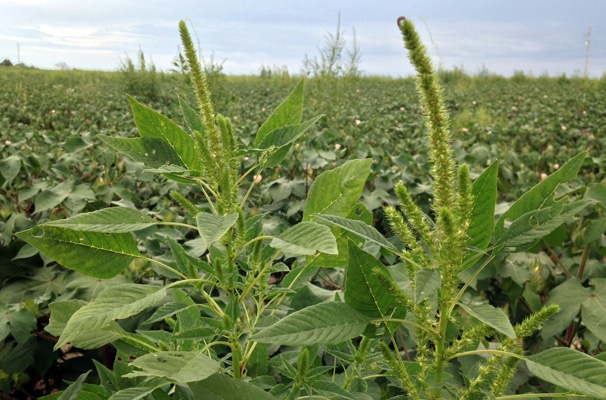
Most Southeast cotton farmers have applied the last of their postemergence or layby herbicides, or soon will. But good weed managers, or the ones who economically beat herbicide resistance, know the cotton weed program isn’t over just yet.
What about the pigweed escapees poking proudly through the cotton canopy?
“Well, it comes down to a farmer’s, or a field by field, decision. But our guys have been making the right choices to do what they have to do to keep Palmer’s (pigweed) seed bank down, which they know they have to do. Now is the time to get out there and check fields and get a weed crew if needed. I know nobody wants to spend more on this crop this year with prices where they are, but this is long-term survival. We’ve made too much positive ground in controlling this pest to slide back now,” said Stanley Culpepper, a University of Georgia Extension weed specialist, at the 2015 Sunbelt Ag Expo Field Day July 9.
Do you need a crew? The weed specialist in Culpepper says to get out there if you see any pigweed breaking through the canopy; those plants are making enough seed to cause problems in the field next year. But getting every pigweed escapee might not be economical. A good threshold to pull the trigger on getting a crew in the field, he says, is if the grower sees five to 10 pigweeds per acre.
Remember, a pigweed can grow an inch a day, and one plant can knock cotton yield potential down by half for many square feet around it. Left unchecked, a female can produce north of half a million seed.
Growers know it. Extension specialist and industry reps preach it: a handful of escaped, unchecked Palmer amaranth plants can in as few as three years lead to enough resistant pigweed plants to economically devastate an entire field.
Georgia cotton growers spend more than $100 million annually now to manage Palmer amaranth. Almost all Georgia cotton growers, according to UGA Extension surveys in recent years, institute some sort of hand weeding at some point during the season, accounting for more than half of the cotton acreage getting a walk through by a hand-weeding crew.
Points to remember about hand weeding:
An unchopped pigweed will produce 400,000 seeds in dryland cotton production.
One chopped to 6 inches will regrow and still produce 130,000 seeds.
One chopped down to 1 inch still produces 36,000 seeds.
And, finally, if the pigweed is chopped all the way to the soil, well, it can still regrow and have time to produce more than 22,000 seeds before frost comes along.
Even if you pull it up, it can still resucker if any part of the remaining root touches soil.
Flush out the corn fields?
Combines are gearing up around southern corn fields, where long summers give pigweed time to flush out after harvest. Just like with cotton, nobody wants to drop more money in a corn field this year. But it might pay off if growers burn down the Palmer amaranth flushes, making weed management for soybean or cotton a bit easier next spring.
Good options to control this late flush of Palmer in Tennessee corn include tillage and the burndown herbicide Gramoxone, or paraquat, says Larry Steckel, University of Tennessee Extension weed specialist.
Disking will provide good control of smaller Palmer, or ones less than 4 inches. But Palmers taller than 8 inches will often re-root and grow back after tillage. Gramoxone will provide consistent control of smaller Palmer but regrowth can happen with larger plants.
Residual herbicides can work, too, considering the time left in the growing season. Fall-applied residual products like Sharpen, Valor, Dual Magnum, metribuzin and simazine would all be good choices in Tennessee post corn harvest, depending on the crop to be planted next spring.
About the Author(s)
You May Also Like






